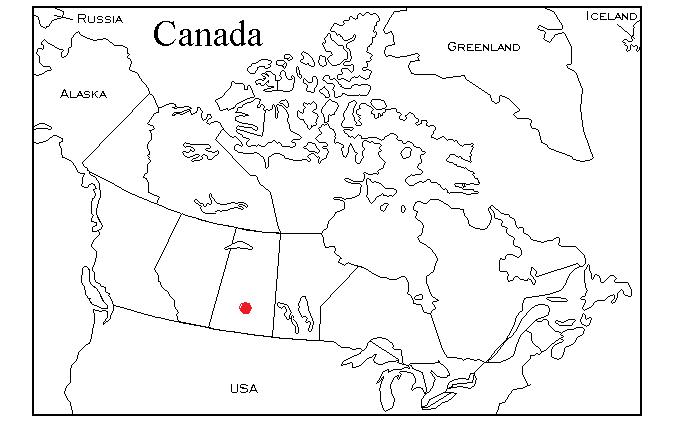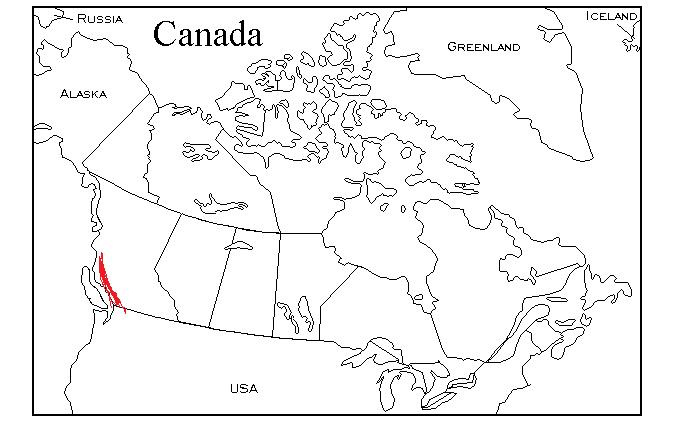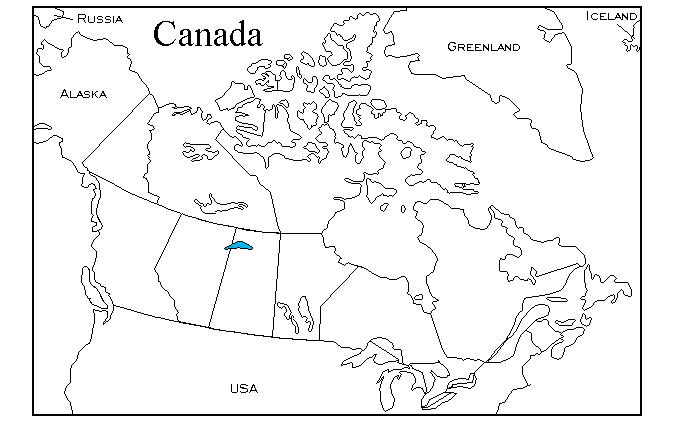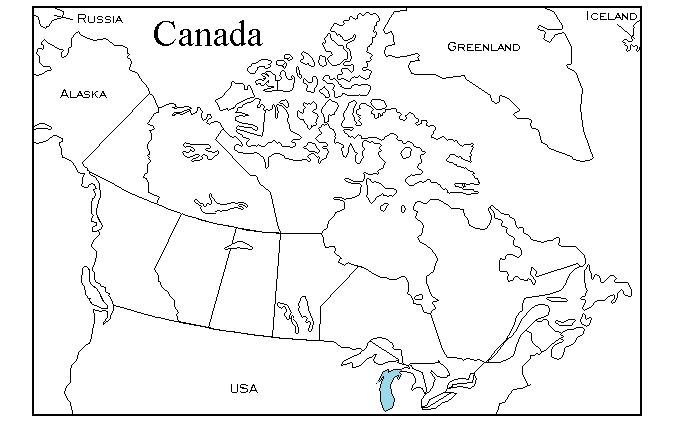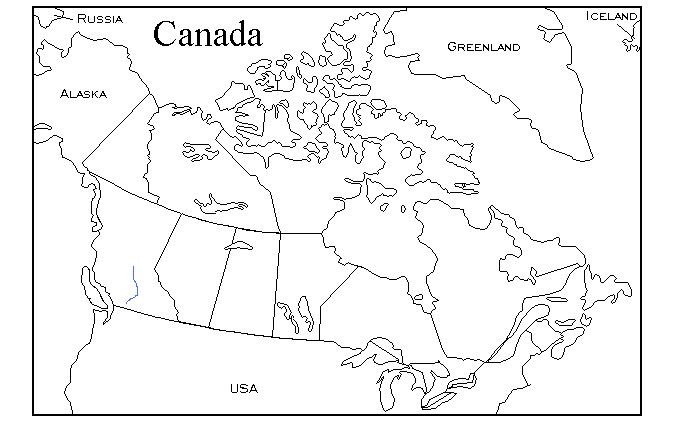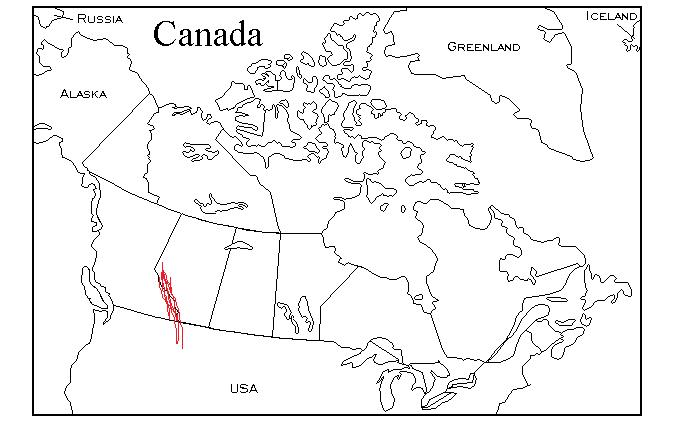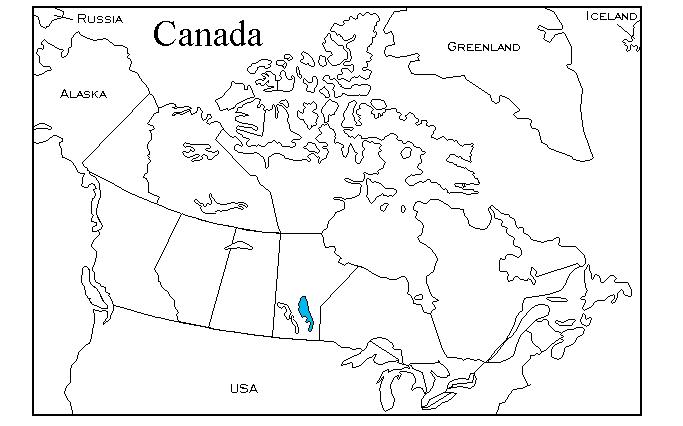Social Studies 10 - North America To 1815

Here is the first official quiz for Mr. Hamlin's Social Studies 10 class
- 1.
What was the major cause of rivalry between Britain and France in North America?
- A.
Differing opinions
- B.
Flag colours
- C.
Feuding families
- D.
Control of resources
- E.
Religion
Correct Answer
D. Control of resourcesExplanation
The major cause of rivalry between Britain and France in North America was the control of resources. Both countries sought to expand their territories and gain access to valuable resources such as fur, timber, and land for agriculture. This competition for resources led to conflicts and wars between the two colonial powers, such as the French and Indian War, as each sought to establish dominance and secure economic advantages in the region.Rate this question:
-
- 2.
In 1759 the city of ____________ was the first to fall to British forces, Montreal came next in 1760.
Correct Answer
QuebecExplanation
In 1759, the city of Quebec was the first to fall to British forces during the French and Indian War. This victory was significant because it allowed the British to gain control over a major French stronghold in North America. Montreal, another important French city, was captured by the British the following year in 1760.Rate this question:
- 3.
The final battle took place on the Plains of ________________
Correct Answer
Abraham - 4.
The victorious British General was named James _______________
- A.
Fox
- B.
Wolfe
- C.
Smith
- D.
Franklin
Correct Answer
B. WolfeExplanation
The correct answer is Wolfe because James Wolfe was a British General who achieved victory in the Battle of Quebec during the Seven Years' War. He is known for his strategic leadership and bold tactics, which led to the capture of Quebec City from the French. Wolfe's victory in this battle was a turning point in the war and established British dominance in North America.Rate this question:
-
- 5.
The French General was named Louis-Joseph______________
- A.
Montgomery
- B.
Montcalm
- C.
Mountain
- D.
Riel
Correct Answer
B. MontcalmExplanation
The correct answer is Montcalm. The question is asking for the name of the French General, and out of the given options, Montcalm is the most likely choice.Rate this question:
-
- 6.
The primary religion of French speaking Canada was ______________________
- A.
Protestant
- B.
Anglican
- C.
Catholic
- D.
Jewish
Correct Answer
C. CatholicExplanation
The primary religion of French speaking Canada was Catholic. This is because Canada was colonized by the French, who brought Catholicism with them. The French settlers established Catholic missions and churches throughout the region, and Catholicism became deeply rooted in the culture and society of French speaking Canada. Catholicism continues to be a prominent religion in this part of Canada, with a significant Catholic population and influence on various aspects of life, including education, politics, and social norms.Rate this question:
-
- 7.
The religion practiced by most British people in North America was ____________________
Correct Answer
protestantExplanation
The religion practiced by most British people in North America was Protestant. This is because the British colonies in North America were predominantly settled by Protestant groups, such as the Puritans, Quakers, and Anglicans. These religious groups sought religious freedom and established their own communities and churches in the colonies. Protestantism was the dominant religious tradition among the British colonists, shaping their beliefs, values, and social structures. This religious influence also had a profound impact on the development of American society and culture.Rate this question:
- 8.
Which of the following was not granted to the Canadiens with the Quebec Act?
- A.
Expanded territory
- B.
Freedom of religion
- C.
Right to vote
- D.
Protection of the French language
Correct Answer
C. Right to voteExplanation
The Quebec Act, passed in 1774, granted several rights and privileges to the Canadiens, who were French-speaking inhabitants of Quebec. These included expanded territory, freedom of religion, and protection of the French language. However, the right to vote was not granted to the Canadiens under the Quebec Act.Rate this question:
-
- 9.
The British governor of Quebec from 1766 to 1770 who argued in favour of the Quebec was__________________?
- A.
Louis Riel
- B.
Benjamin Franklin
- C.
Sir Guy Carleton
- D.
Thomas Wolfe
Correct Answer
C. Sir Guy CarletonExplanation
Sir Guy Carleton was the British governor of Quebec from 1766 to 1770. He argued in favor of the Quebec Act, which aimed to provide religious and civil rights to the French-speaking Catholic population in Quebec. Carleton believed that granting these rights would help maintain peace and stability in the region. His support for the Quebec Act reflected a more inclusive and tolerant approach towards the French Canadians, which was in contrast to the policies of previous British governors.Rate this question:
-
- 10.
Landowners in Quebec were known as __________________?
- A.
Seniors
- B.
Lords
- C.
Seigneurs
- D.
Kings
Correct Answer
C. SeigneursExplanation
In Quebec, landowners were known as seigneurs. The term seigneur refers to a feudal lord or landowner who held a large estate and had control over the land and the people living on it. This system of land ownership and governance was prevalent in Quebec during the French colonial period and continued to have an impact on the region's social and economic structure. The seigneurs played a significant role in the administration and development of their estates, collecting rents from the tenants and ensuring the proper management of the land.Rate this question:
-
- 11.
The Quebec Act expanded the territory of Quebec as far south as the resource rich ________________ Valley.
Correct Answer
ohioExplanation
The Ohio Valley was the southern limits of the new Quebec colony, it had huge resources of fur, wood, and fish.Rate this question:
- 12.
One year after the Quebec Act, growing troubles in the southern colonies resulted in the beginning of the American Revolution. How many colonies existed down south?
- A.
13
- B.
16
- C.
21
- D.
30
Correct Answer
A. 13Explanation
The correct answer is 13. This is because there were originally 13 colonies in the southern region of the United States before the American Revolution. These colonies included Virginia, Maryland, North Carolina, South Carolina, Georgia, Delaware, Pennsylvania, New Jersey, New York, Connecticut, Rhode Island, Massachusetts, and New Hampshire.Rate this question:
-
- 13.
The __________ Act of 1765 dictated that taxes had to be paid for everyday purchases like newspapers, tea, books, legal documents, and other things.
Correct Answer
stampExplanation
The Stamp Act of 1765 was a law that required colonists to pay a tax on various printed materials, such as newspapers, legal documents, and even playing cards. The act was imposed by the British government in an attempt to generate revenue from the American colonies. This tax was highly controversial and sparked widespread protests and resistance among the colonists, as they believed it violated their rights to be taxed without representation. The Stamp Act played a significant role in fueling the growing tensions between the American colonies and Britain, ultimately leading to the American Revolution.Rate this question:
- 14.
The colonists were never fully happy because they did not have the right to vote.They chose the motto of "Taxation without ___________________ is tyranny " as their slogan.
- A.
Income
- B.
Representation
- C.
Religion
- D.
Documentation
Correct Answer
B. RepresentationExplanation
The colonists were never fully happy because they did not have the right to vote. They believed that being subjected to taxation without representation was a form of tyranny. They wanted to have a say in the laws and decisions that affected their lives, and without the right to vote, they felt that their voices were not being heard. This motto of "Taxation without representation is tyranny" became their slogan, highlighting their dissatisfaction with the lack of political representation.Rate this question:
-
- 15.
The Boston ____________ Party was the result of colonists protesting a certain tax. They snuck onto a British ship in Boston harbour and threw crates of this certain substance overboard.
Correct Answer
teaExplanation
The Boston Tea Party was a historical event in which colonists protested against the tax imposed on tea by the British. They boarded a British ship in Boston harbor and dumped crates of tea into the water.Rate this question:
- 16.
The Loyalists were American colonists who remained loyal to ______________ .
- A.
Britain
- B.
France
- C.
Canada
- D.
America
Correct Answer
A. BritainExplanation
The Loyalists were American colonists who remained loyal to Britain during the American Revolution. They believed in maintaining the colonial relationship with Britain and opposed the movement for independence. These individuals often faced persecution and discrimination from the Patriots who supported the American cause. Many Loyalists eventually migrated to Canada and other British colonies after the war.Rate this question:
-
- 17.
During the American Revolution, the Loyalists were forced to flee America or risk losing their lands, or even worse, death. They fled to many places and one Canadian colony in particular. This was _______________
- A.
New Brunswick
- B.
Nova Scotia
- C.
Newfoundland
- D.
Prince Edward Island
Correct Answer
B. Nova ScotiaExplanation
During the American Revolution, the Loyalists faced persecution and were compelled to leave America to protect their lands and lives. Many of them sought refuge in various places, including a Canadian colony. Nova Scotia was one of the primary destinations for these Loyalists, offering them a safe haven and the opportunity to rebuild their lives.Rate this question:
-
- 18.
These Loyalists referred to themselves as the United _______________ Loyalists.
- A.
British
- B.
Free
- C.
English
- D.
Empire
Correct Answer
D. EmpireExplanation
The correct answer is "Empire" because the sentence states that these Loyalists referred to themselves as the United _______________ Loyalists. Since they were loyal to the British Empire, it makes sense that they would identify themselves as the United Empire Loyalists.Rate this question:
-
- 19.
Other Loyalists settled in the area that is now the Great Lake district around present day Southern Ontario. One of the main cities that sprang up was known as York, which today is referred to as _______________.
Correct Answer
TorontoExplanation
York later became Toronto, eventually becoming the capital of Ontario.Rate this question:
- 20.
The Loyalists had difficulties settling in the French colony and struggled with the differences in language and religion. In 1791, the colony was split to create Upper and Lower Canada. The act that created this split was called ___________________
- A.
The Division Act of 1791
- B.
The Constitutional Act of 1791
- C.
The 1791 Revolution
- D.
The Stamp Act
Correct Answer
B. The Constitutional Act of 1791Explanation
The correct answer is the Constitutional Act of 1791. This act was passed to address the difficulties faced by the Loyalists in the French colony. It split the colony into Upper and Lower Canada, which helped to address the differences in language and religion. The act also introduced a new system of government and provided certain rights and protections for the settlers.Rate this question:
-
- 21.
After the Constitutional Act of 1791, Quebec City was now located in _____________ Canada.
- A.
Upper
- B.
Lower
Correct Answer
B. LowerExplanation
After the Constitutional Act of 1791, Quebec City was now located in Lower Canada. The Constitutional Act divided the province of Quebec into Upper Canada and Lower Canada, with Quebec City falling within the boundaries of Lower Canada. This act was passed by the British Parliament and aimed to address the concerns of the English-speaking and French-speaking populations in Quebec by creating separate legislatures for each region. Upper Canada encompassed the western portion of the province, while Lower Canada included the eastern portion, where Quebec City was situated.Rate this question:
-
- 22.
When Loyalists arrived in Canada, they received some land but many found it hard to adjust to this new lifestyle. This was because ___________________________
- A.
Many loyalists were professionals like lawyers and doctors and had no experience farming.
- B.
Loyalists were mostly lazy.
- C.
Loyalists were allergic to Canadian air.
- D.
Loyalists were too busy working on their shelters.
Correct Answer
A. Many loyalists were professionals like lawyers and doctors and had no experience farming.Explanation
Many loyalists were professionals like lawyers and doctors and had no experience farming. This made it difficult for them to adjust to the new lifestyle in Canada, as they were not accustomed to the physical labor and skills required for farming.Rate this question:
-
- 23.
The Constitutional Act of 1791 created legislative assemblies in both Upper and Lower Canada. The legislative assembly of _____________________ Canada had the most power however because their Governor General could veto any final votes.
- A.
Upper
- B.
Lower
Correct Answer
B. LowerExplanation
The Constitutional Act of 1791 established legislative assemblies in both Upper and Lower Canada. However, the legislative assembly of Lower Canada had more power because their Governor General had the authority to veto any final votes. This means that the Governor General could reject or overrule any decisions made by the legislative assembly of Lower Canada, giving them a significant amount of control and influence over the legislative process.Rate this question:
-
- 24.
Up until 1849,Women landowners had the right to vote. This all changed in 1849 when the word "_____________" was inserted into the Franchise Act.
Correct Answer
maleExplanation
The correct answer is "male." Up until 1849, women landowners had the right to vote. However, this changed when the word "male" was inserted into the Franchise Act. This amendment specifically limited voting rights to men, thereby excluding women from the right to vote.Rate this question:
- 25.
After the Franchise Act, women still had the right to vote only for these public figures.
- A.
Judges
- B.
Mayors
- C.
School trustees
- D.
Prime minister's
Correct Answer
C. School trusteesExplanation
After the Franchise Act, women were granted limited voting rights and were only allowed to vote for certain public figures. Among these public figures were judges, mayors, and school trustees. The inclusion of school trustees as a voting option suggests that women were given the opportunity to have a say in the education system and the decision-making processes related to schools. This limited extension of voting rights to school trustees indicates a recognition of the importance of education and the role of women in shaping educational policies.Rate this question:
-
- 26.
At the outset of 1812, tensions were high between the British and French. This was primarily due to the fight against the French leader ___________________.
- A.
Adolf Hitler
- B.
King Louis XIV
- C.
Napoleon Bonaparte
- D.
Queen Charlotte
Correct Answer
C. Napoleon BonaparteExplanation
At the outset of 1812, tensions were high between the British and French primarily due to the fight against the French leader Napoleon Bonaparte. Napoleon was a powerful and ambitious leader who sought to expand his empire and exert control over Europe. His aggressive actions and military campaigns threatened the British and other European powers, leading to conflicts and hostilities between them. The British saw Napoleon as a threat to their interests and stability in Europe, which contributed to the tensions between the two nations.Rate this question:
-
- 27.
In 1812, a new American president, James Madison was elected. We was supported primarily by _________________________ who were strongly in favour of war with Britain.
- A.
Hawkeyes
- B.
Boy scouts
- C.
War hawks
- D.
Storm troopers
Correct Answer
C. War hawksExplanation
During the presidency of James Madison in 1812, he was primarily supported by a group known as "war hawks." These individuals were strongly in favor of engaging in a war with Britain. They believed that war was necessary to defend American interests and honor, particularly in response to British actions such as impressment and support for Native American resistance against American expansion. The war hawks were influential in pushing for the War of 1812, which ultimately took place during Madison's presidency.Rate this question:
-
- 28.
Once the War of 1812 began, James Madison was surprised to find out that the American's were ________________________ for war.
- A.
Very well prepared
- B.
Unprepared
- C.
Totally ready
- D.
Very scared
Correct Answer
B. UnpreparedExplanation
James Madison was surprised to find out that the Americans were unprepared for war because he had expected them to be well-prepared. This suggests that the Americans were not adequately equipped or organized to engage in warfare, which put them at a disadvantage during the War of 1812.Rate this question:
-
- 29.
The Canadiens defended themselves by making alliances with the British and _________________.
- A.
The French
- B.
The Native Indians
- C.
The Irish
- D.
The Seigneurs
Correct Answer
B. The Native IndiansExplanation
The Canadiens defended themselves by making alliances with the British and the Native Indians. This alliance allowed them to have additional support and resources in their efforts to protect themselves. The Native Indians were strategic allies due to their knowledge of the land and their skills in warfare, which proved to be advantageous for the Canadiens in their defense.Rate this question:
-
- 30.
The Americans were ___________________ in the War of 1812.
- A.
Victorious
- B.
Defeated
Correct Answer
B. DefeatedExplanation
During the War of 1812, the Americans were defeated. This means that they did not emerge as the winners or conquerors in the war. Instead, they suffered a loss or were overcome by their opponents. The word "defeated" suggests that the Americans were not successful in achieving their goals or defeating their enemies in the conflict.Rate this question:
-
- 31.
The British won the War of 1812 because they were ____________________.
- A.
More ruthless
- B.
Sneakier and deceitful
- C.
Better organized with better weapons
- D.
Cold blooded
Correct Answer
C. Better organized with better weaponsExplanation
The British won the War of 1812 because they were better organized with better weapons. This means that they had a more efficient and coordinated military strategy, as well as superior weaponry compared to their opponents. Their organization and advanced weaponry likely gave them an advantage in battles and allowed them to outmaneuver and overpower their opponents, ultimately leading to their victory in the war.Rate this question:
-
- 32.
During the War of 1812, the Battle of Queenston took place near this famous water landmark, _________________ Falls.
Correct Answer
NiagaraExplanation
During the War of 1812, the Battle of Queenston took place near this famous water landmark, Niagara Falls. Niagara Falls is a well-known and iconic waterfall located on the border between the United States and Canada. It is a significant natural landmark and a popular tourist attraction. The mention of the Battle of Queenston and its proximity to Niagara Falls suggests that the correct answer is indeed Niagara.Rate this question:
- 33.
The Battle of Queenston near Niagara Falls involved the British, the Canadien militia and this Native Indian leader.
- A.
Chief George
- B.
Pontiac
- C.
Tecumseh
- D.
Detroit
Correct Answer
C. TecumsehExplanation
Tecumseh was a Native Indian leader who played a significant role in the Battle of Queenston near Niagara Falls. He led a coalition of Native American tribes and fought alongside the British and Canadian militia against American forces during the War of 1812. Tecumseh's leadership and military tactics were crucial in the battle, and his alliance helped to secure a British victory.Rate this question:
-
- 34.
The War of 1812 ended in 1814 with Britain and USA signing the Treaty of _____________.
- A.
Versailles
- B.
Britain
- C.
York
- D.
Ghent
Correct Answer
D. GhentExplanation
The War of 1812, which began in 1812 between Britain and the United States, came to an end in 1814 with the signing of the Treaty of Ghent. This treaty was signed in Ghent, Belgium, and it restored the pre-war status quo between the two nations. The treaty did not address the issues that led to the war, but it effectively ended the conflict and established peace between Britain and the USA.Rate this question:
-
- 35.
The next few questions will be regarding the Canada Map assignment.Name the capital of Prince Edward Island
- A.
Fredericton
- B.
Charlottetown
- C.
Halifax
- D.
St. John's
Correct Answer
B. CharlottetownExplanation
Charlottetown is the correct answer because it is the capital of Prince Edward Island. Fredericton is the capital of New Brunswick, Halifax is the capital of Nova Scotia, and St. John's is the capital of Newfoundland and Labrador.Rate this question:
-
- 36.
The capital of Canada is ______________________.
Correct Answer
OttawaExplanation
The capital of Canada is Ottawa.Rate this question:
- 37.
The ________________________ River was the main source of transportation into Lower Canada.
- A.
Fraser
- B.
Churchill
- C.
Hudson
- D.
St. Lawrence
Correct Answer
D. St. LawrenceExplanation
The St. Lawrence River was the main source of transportation into Lower Canada. This river played a crucial role in the development of trade and commerce in the region, as it provided a direct route for ships to transport goods and people. The St. Lawrence River also connected Lower Canada to the Great Lakes and the Atlantic Ocean, making it an important waterway for both domestic and international trade.Rate this question:
-
- 38.
The capital of this province is _________________.
Correct Answer
ReginaExplanation
The correct answer for the capital of this province is Regina.Rate this question:
- 39.
The is the _____________ mountain Range.
- A.
Coast
- B.
Selkirk
- C.
Rocky
- D.
Monashee
Correct Answer
A. CoastExplanation
The given correct answer for this question is "Coast". This suggests that the missing word in the sentence should be a mountain range that is associated with the coast. Out of the options provided, "Coast" is the only one that fits this description. The other options, such as Selkirk, Rocky, and Monashee, are mountain ranges that are not specifically associated with the coast. Therefore, "Coast" is the most appropriate answer in this context.Rate this question:
-
- 40.
On the Northern border of Alberta and Saskatchewan you will find this Lake.
- A.
Lake Erie
- B.
Lake Huron
- C.
Lake in the Woods
- D.
Lake Athabasca
Correct Answer
D. Lake AthabascaExplanation
Lake Athabasca is located on the Northern border of Alberta and Saskatchewan. It is a large lake that spans both provinces. The other options, Lake Erie and Lake Huron, are located in the eastern part of North America and are not near the Alberta-Saskatchewan border. Lake in the Woods is not a specific lake and does not exist. Therefore, the correct answer is Lake Athabasca.Rate this question:
-
- 41.
The capital of this northern territory is ________________.
- A.
Iqaluit
- B.
Yellowknife
- C.
Red Deer
- D.
Whitehorse
Correct Answer
D. WhitehorseExplanation
The correct answer is Whitehorse. Whitehorse is the capital of Yukon, a northern territory in Canada. It is located in the western part of the country, near the border with Alaska. Whitehorse is known for its natural beauty, with the Yukon River running through the city and the surrounding mountains providing stunning views. It is also a hub for outdoor activities such as hiking, fishing, and wildlife spotting.Rate this question:
-
- 42.
This Great Lake shares it's name with a U.S. state.
- A.
Lake Nebraska
- B.
Lake New York
- C.
Lake Michigan
- D.
Lake Minnesotta
Correct Answer
C. Lake MichiganExplanation
Lake Michigan is the correct answer because it shares its name with a U.S. state. Michigan is a state in the United States, and Lake Michigan is one of the Great Lakes located partially within the state of Michigan. The lake is named after the state, making it the correct option in this question.Rate this question:
-
- 43.
The capital of Quebec is _____________
- A.
Trois Rivieres
- B.
Montreal
- C.
Hull
- D.
Quebec City
Correct Answer
D. Quebec CityExplanation
Quebec City is the correct answer because it is the capital of Quebec. It is the political and administrative center of the province and is known for its rich history, beautiful architecture, and vibrant culture. Trois Rivieres, Montreal, and Hull are all cities in Quebec, but they are not the capital.Rate this question:
-
- 44.
_____________________ is the capital of Nova Scotia
Correct Answer
HalifaxExplanation
Halifax is the capital of Nova Scotia.Rate this question:
- 45.
Name this major British Columbia river.
Correct Answer
Fraser, Fraser RiverExplanation
The correct answer is Fraser, Fraser River. The Fraser River is a major river in British Columbia, Canada. It is named after Simon Fraser, a Scottish explorer who was the first European to navigate the river in 1808. The Fraser River is the longest river in British Columbia and is known for its diverse wildlife, including salmon and bald eagles. It is an important waterway for transportation, hydroelectric power generation, and supports various industries such as fishing and tourism.Rate this question:
- 46.
What mountain range is this?
- A.
Selkirk Mountains
- B.
Himalaya Mountains
- C.
Rocky Mountains
- D.
Coast Mountains
Correct Answer
C. Rocky MountainsExplanation
The correct answer is Rocky Mountains because the question asks for the name of a specific mountain range, and the Rocky Mountains is one of the most well-known mountain ranges in North America. The other options, Selkirk Mountains, Himalaya Mountains, and Coast Mountains, are also mountain ranges, but they are not as commonly associated with the given image or location.Rate this question:
-
- 47.
This lake shares the same name as the capital of the province where you find it.
Correct Answer
WinnipegExplanation
The lake mentioned in the question shares the same name as the capital of the province where it is located. In this case, the correct answer is Winnipeg, as the lake and the capital of the province both have the same name.Rate this question:
- 48.
Last Question - nice and easy for you! The capital of British Columbia is _______________.Best of luck
- A.
Vancouver
- B.
Victoria
- C.
New Westminster
- D.
Victoria
Correct Answer
D. VictoriaExplanation
The correct answer is Victoria. Victoria is the capital of British Columbia. It is located on the southern tip of Vancouver Island and is known for its beautiful gardens, historic buildings, and waterfront views. The city is named after Queen Victoria and has a rich history and cultural heritage.Rate this question:
-
Quiz Review Timeline +
Our quizzes are rigorously reviewed, monitored and continuously updated by our expert board to maintain accuracy, relevance, and timeliness.
-
Current Version
-
Mar 20, 2023Quiz Edited by
ProProfs Editorial Team -
Feb 18, 2010Quiz Created by
Jonhamlin
- Cartography Quizzes
- Civics Quizzes
- Economics Quizzes
- El112 Quizzes
- English Quizzes
- Geography Quizzes
- History Quizzes
- Humanities Quizzes
- Law Quizzes
- Linguistics Quizzes
- Logic Quizzes
- Math Quizzes
- Philosophy Quizzes
- Political Science Quizzes
- Politics Quizzes
- Science Quizzes
- Social Science Quizzes
- Sociology Quizzes
 Back to top
Back to top



